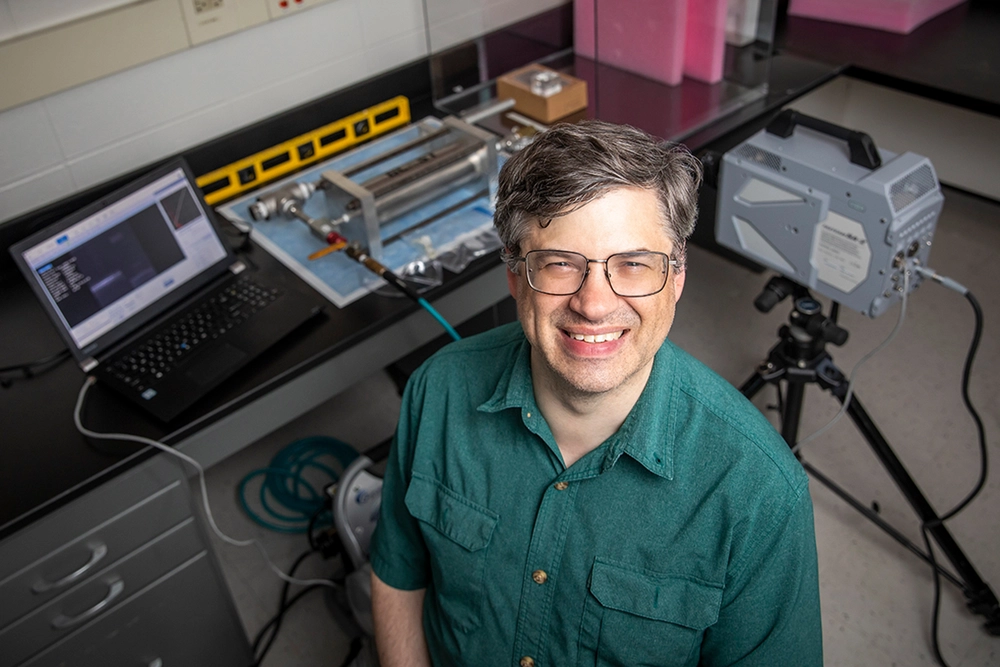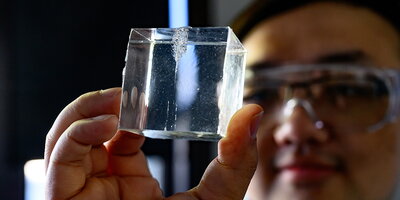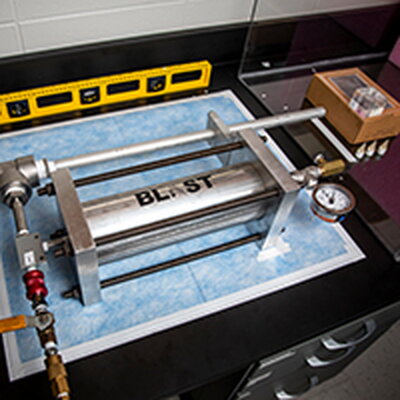
CHAMPAIGN, Ill. — Thin, stretchy skin — like that of a pig or human — significantly lessens the underlying damage that occurs when it’s punctured. Pig skin even outperforms synthetic materials that are designed to mimic skin, a new study finds. Its special qualities, in particular its ability to dissipate the energy of a puncturing object, greatly reduce the damage to deeper tissues, researchers report.
Their findings appear in the Journal of the Royal Society Interface.
Philip Anderson, a professor of evolution, ecology and behavior who led the study with postdoctoral researcher Bingyang Zhang at the University of Illinois Urbana-Champaign, is fascinated by how the laws of physics influence evolution. This interest led to an exploration of the dynamics of puncturing objects, which are ubiquitous in nature.
“You’ll find things that puncture across multiple kinds of organisms — vertebrates, invertebrates, plants and fungi — at all scales and different dynamic regimes, so fangs, claws, spines, stingers and other long, sharp implements,” Anderson said.
Isolating all the variables involved in puncture — the speed, shape and sharpness of a puncturing object, for example, or the mechanics of material failure in the target — is a tall task, he said. He and his colleagues started by measuring the basic elements of puncture, using 3D-printed cones with different profiles and sharpness as puncturing objects and silicone gels of various densities as targets. Having answered some fundamental questions about the physics of puncture, Anderson’s lab is now pursuing more in-depth studies of biological materials.

For the new experiments, Zhang tested the “puncturability” of slabs of pork with and without the skin attached and compared the performance of these biological materials with a synthetic mimic: a silicone gel with the approximate rigidity of blubber and another thinner and higher-rigidity gel representing skin. Due to the constraints of the material, the silicone skin was about 4 mm thick, while the animal skin was about 2.5 mm thick. Despite this difference, the team found that real pig skin outperformed the silicone skin in puncture tests that involved shooting a projectile at the materials at different speeds and measuring how deeply they punctured the tissue.

“Using a combination of dynamic puncture experiments and theoretical modeling, we examined the puncture resistance of both natural skin tissues and synthetic bilayer tissue-mimicking materials,” Zhang said. “We found that, despite its thinness, pig skin attached to underlying tissue reduced damage from puncture by about 60% at slower speeds and 73% at higher speeds compared with the same pig tissue without skin.”
Synthetic skin offered less protection, reducing the damage to the underlying gel by less than 40% at slower speeds and less than 30% at higher speeds, the researchers found.
“These findings demonstrate the superior biomechanical performance of natural skin,” Zhang said.
“Having the skin layer is really good at blunting the puncture,” Anderson said. “In fact, at low speeds, the tool couldn’t even puncture the skin.”
The researchers hypothesize that skin’s better performance was due, in part, to the fact that is it made up of collagen fibers, which are woven together and offer resistance even when some of the fibers are broken. The breakage of collagen fibers also dissipates some of the energy of the projectile, slowing it down and lessening its ability to penetrate more deeply into the tissue. Silicone gel lacks this property.
“We have shown the unique ability of natural skin to redistribute force and dissipate energy as a remarkable defensive structure,” Zhang said. “We also learned a great deal about how synthetic materials, while useful in many scenarios, still fall short in replicating these complex biological functions.”
The National Science Foundation supported this work.
Bingyang Zhang is now a postdoctoral researcher at Cornell University.
Editor’s notes
To reach Philip Anderson, email andersps@illinois.edu.
To reach Bingyang Zhang, email bz364@cornell.edu.
The paper “Being thin-skinned can still reduce damage from dynamic puncture” is available online.